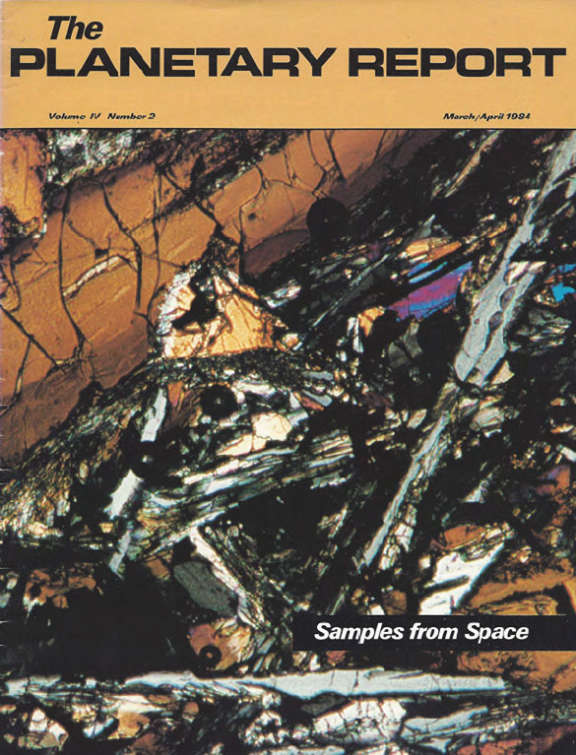The Planetary Report • March/April 1984
Samples from Space
On the Cover: Scientists have applied a wide range of techniques to analyzing extraterrestrial materials. This microscopic photograph (a little over one millimeter across the field of view) of a lunar basalt was made by shining polarized light through a wafer of rock (30 micrometers thick). The shapes and sizes of the minerals indicate that the rock crystallized in a lava flow. Pyroxene appears as orange and blue; the gray is feldspar.
Features
3 Getting Our Hands on the Universe: Bevan M. French explains how rocks from space tell us about the solar system.
4 Moon Rocks: Still New Questions About an Old Moon: G. Jeffrey Taylor showcases how samples from Apollo, along with lunar meteorites, are teaching us about our celestial neighbor.
7 Meteorites: Little Rocks with Lots of History: Harry Y. McSween, Jr. summarizes some of the most exciting recent discoveries and unsolved problems in meteorite research.
9 Cosmic Dust: Donald E. Brownlee discusses how the smallest pieces of the solar system are beginning to tell us their stories.
12 Meteorites on Ice: Ursula B. Marvin highlights the hunt for meteorites in Antarctica.
16 The Resources of Space: Larry A. Haskin looks at mining the Moon and asteroids.
18 The Long Reach: Bevan M. French describes how machines may collect our next samples from other worlds.
Departments
15 News & Reviews Voyager Saturn encounters; planetary perspective on nuclear war.
20 World Watch The President's budget proposal for NASA; considering a space station.
21 Society Notes Sally Ride joins advisors, naming the Venus Radar Mapper, and Halley Watch.
The Planetary Report • March/April 1984
Help advance space science and exploration! Become a member of The Planetary Society and you'll receive the full PDF and print versions of The Planetary Report.


 Explore Worlds
Explore Worlds Find Life
Find Life Defend Earth
Defend Earth


